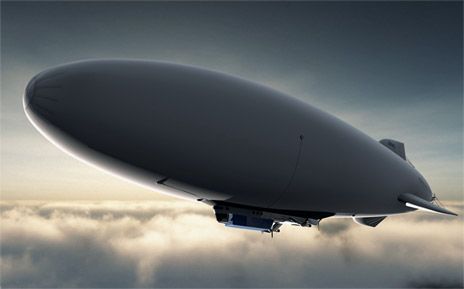Airships for the 21st Century
Long-duration, heavy-lift designs breathe new life into the world's oldest aircraft technology

In appearance, the Skybus 80K bears the same oblong shape as the Goodyear Blimp, and it's based on the same flight principles that have governed airships since the 1800s. But this airship, one of a number of commercial and military vehicles now under development, represents a distinct break from tradition. Unlike their dirigible cousins of past centuries, these new vehicles are being designed to lift heavy payloads, remain aloft for weeks or even months at a time, and fly without pilots—all while expending far less energy than a conventional airplane or unmanned aerial vehicle. The Predator UAV, for instance, can carry a payload of 340 kilograms on a typical mission of up to 40 hours. SAIC's Skybus 1500E pilot-optional airship is being designed to carry a payload three times that size and stay aloft for up to 21 days.
The renewed investment in airships comes at a time when the energy footprint of all modes of transportation is being scrutinized. Some aviation visionaries now argue that we can't continue using exclusively petroleum-based fuels to power our aircraft. Such concerns have prompted new research into jet biofuels and energy-efficient jet engines. We've also begun to understand that not every flight has to be made at eight-tenths the speed of sound. For certain tasks, airplanes just can't compete with airships.
Modern airship designers are targeting two pressing needs: intelligence, surveillance, and reconnaissance missions and the transporting of multiton payloads to locations unreachable by conventional transport. For example, airships are ideal for continuously monitoring sites where improvised explosive devices or rocket launchers may be deployed. They also excel at scanning for distant airborne threats. That's why, in June, the U.S. Army awarded a US $517 million contract to Northrop Grumman and British firm Hybrid Air Vehicles to build three airships, each as long as a football field, to monitor trouble spots in Afghanistan. Cargo airships, meanwhile, are especially attractive for places that have poor roads and for remote regions that have no roads at all. At a transportation conference I recently attended in Canada's Northwest Territories, mining company executives and community leaders expressed strong support for using airships to shuttle equipment and supplies to distant mining outposts and villages. Such needs are driving the reinvention of the airship.
|
|
